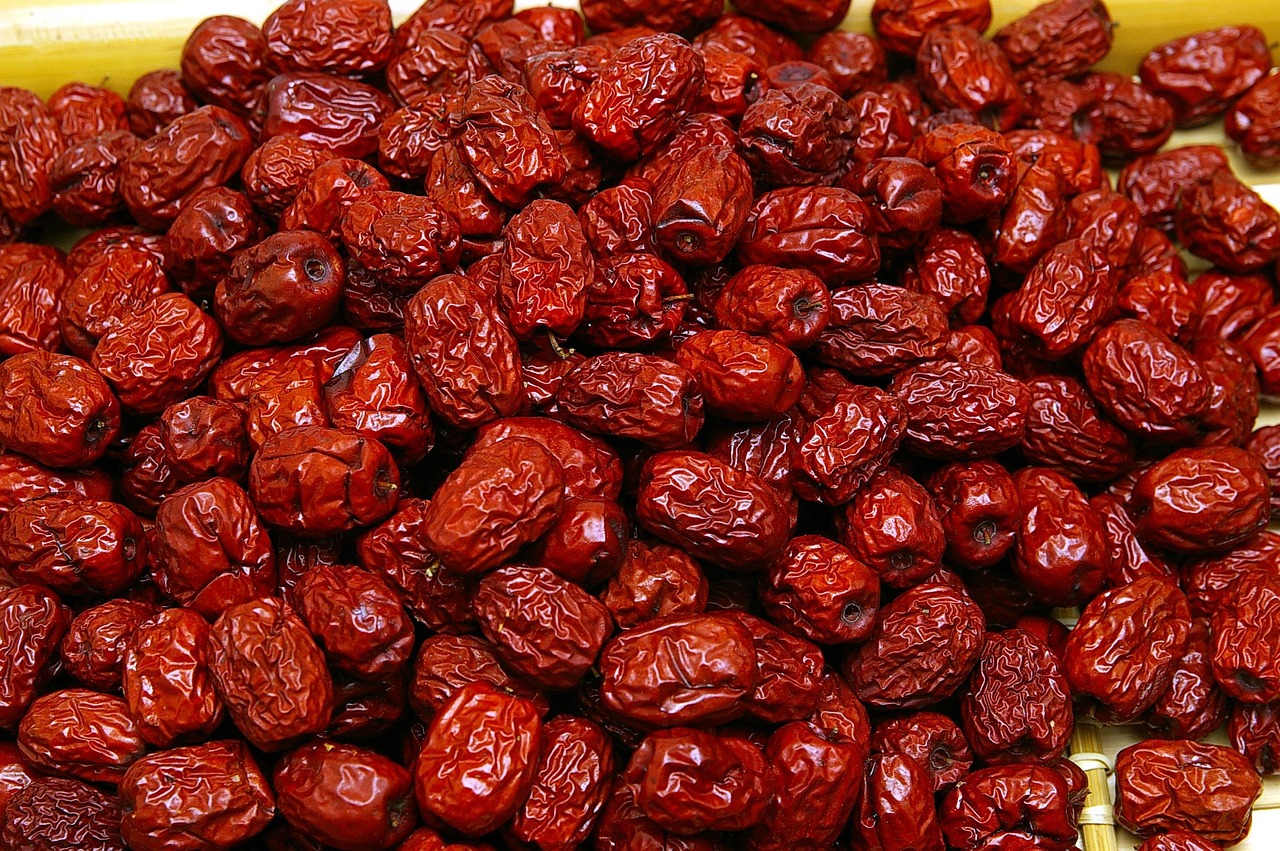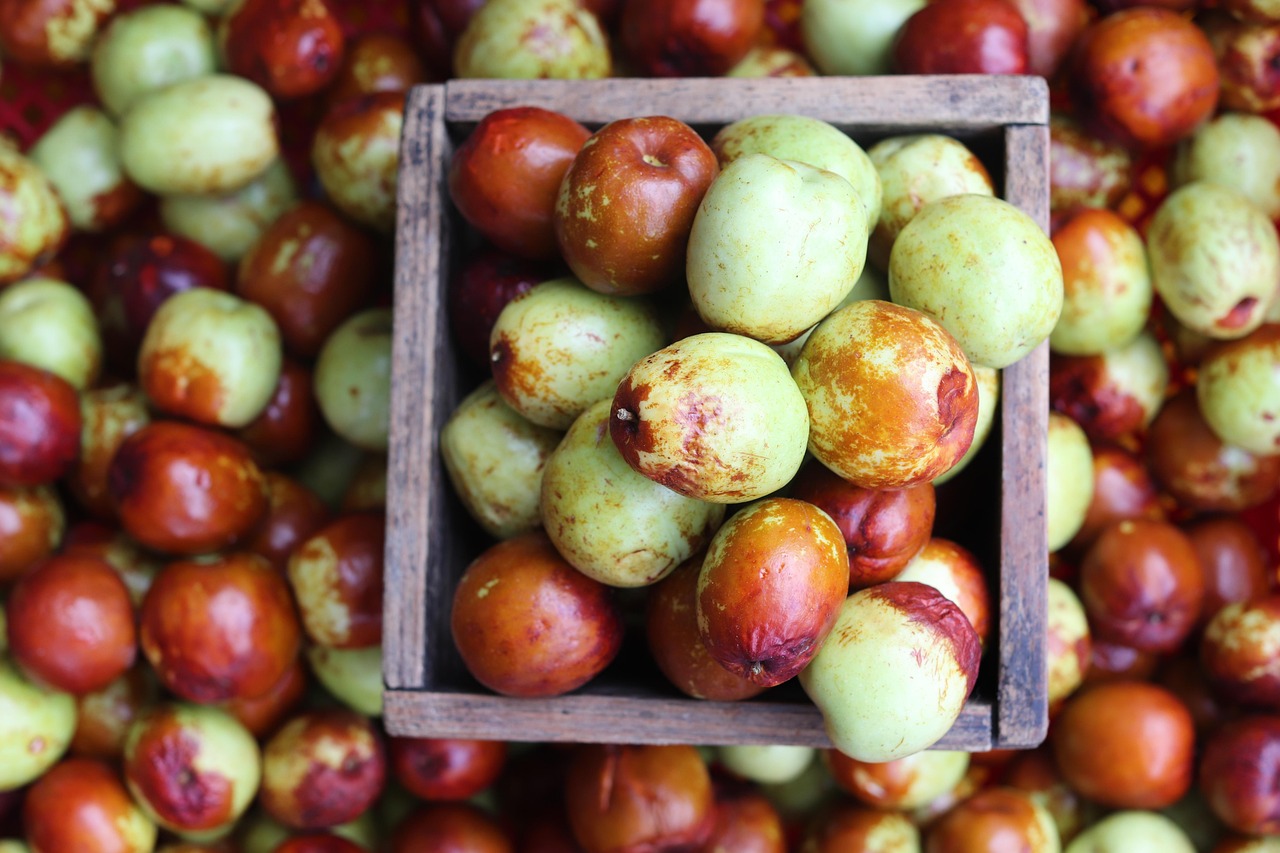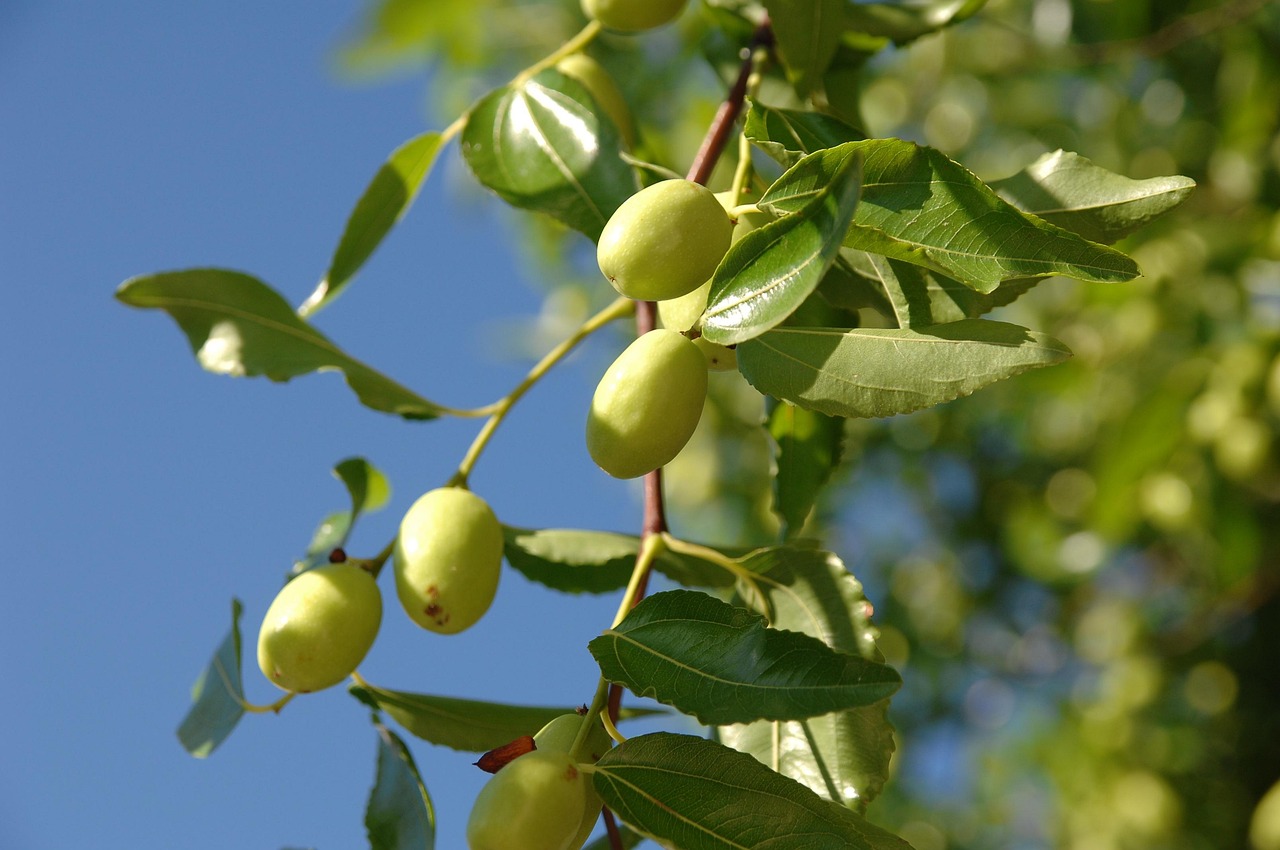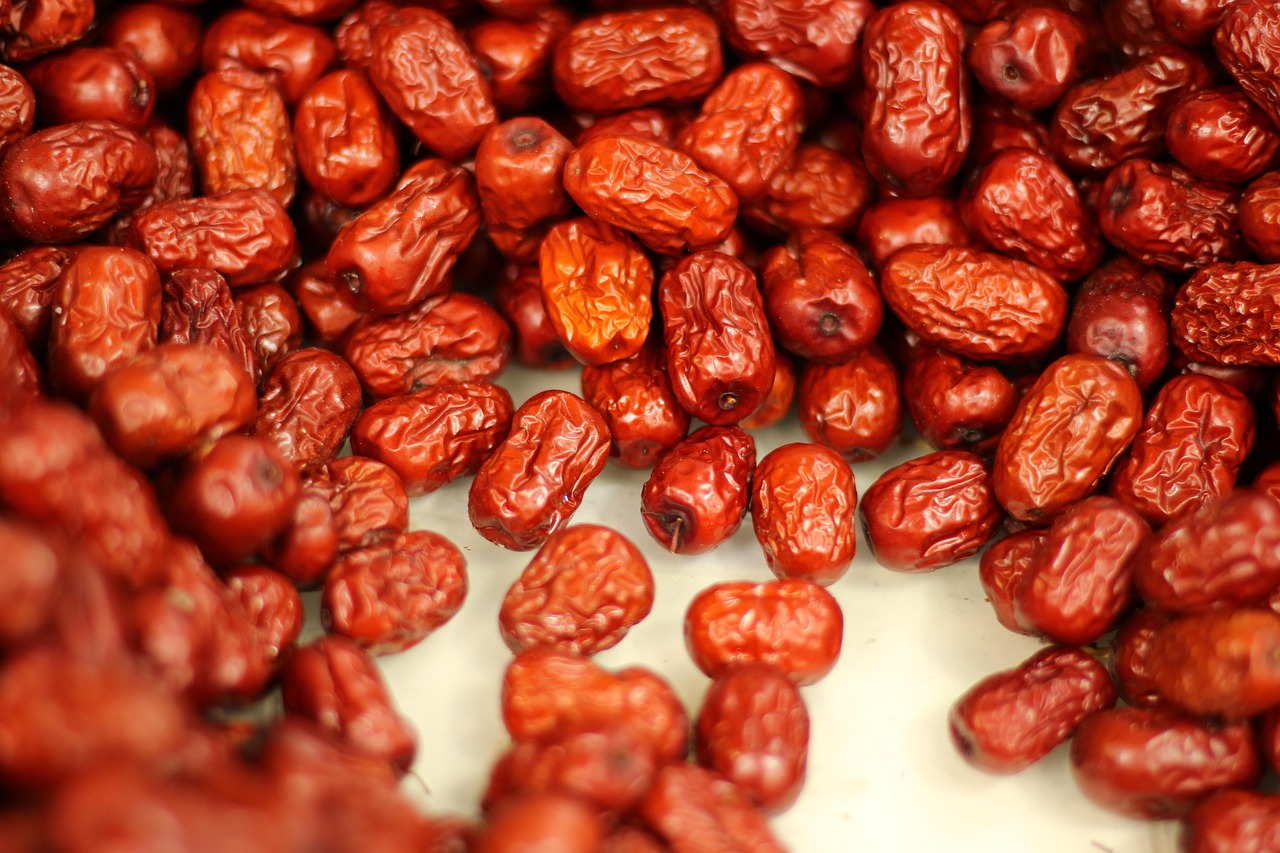The Jujube tree (Ziziphus jujuba) exhibits a moderate growth rate, typically ranging from 12 to 24 inches per year under optimal conditions. In drought-resistant orchards, its growth may slow down, but it remains resilient due to its deep root system.
Understanding the Jujube Tree
The Jujube tree, commonly known as the Chinese date, is a hardy plant native to Asia. It thrives in arid and semi-arid environments, making it an excellent choice for drought-resistant orchards. The tree is well-regarded for its resilience and ability to adapt to various soil types. Its fruit is not only nutritious but also has cultural significance in many regions.

One of the most appealing aspects of the Jujube tree is its low water requirements. This makes it an attractive option for farmers and gardeners looking to establish sustainable orchards in areas where water is limited. In addition to its drought resistance, the Jujube tree has several other beneficial qualities.
- It requires minimal maintenance once established.
- The tree is pest-resistant, reducing the need for chemical treatments.
- Its fruits can be harvested in late summer to early fall.
Growth Characteristics
The growth rate of the Jujube tree can vary based on several factors, including soil quality, climate, and care practices. Under ideal conditions, young Jujube trees can grow quickly, reaching heights of 10 to 30 feet over several years. However, in drought-prone areas or less-than-ideal conditions, growth may slow significantly.
Optimal Conditions for Growth
For optimal growth, Jujube trees prefer full sun exposure and well-drained soil. They can tolerate a range of soil types, but sandy loam is ideal. Here are some key factors that influence their growth:

- Soil Quality: Nutrient-rich, well-drained soil enhances growth.
- Water Availability: Deep watering encourages strong root development.
- Sunlight: Full sun is essential for fruit production.
Drought Resistance
The Jujube tree’s drought resistance comes from its extensive root system, which can reach depths of up to 30 feet. This allows the tree to access moisture that other plants cannot. Additionally, its leaves have a waxy coating that reduces water loss through evaporation.
Factors Affecting Growth Rate
Several environmental and management factors can influence the growth rate of Jujube trees in drought-resistant orchards. Understanding these factors can help growers maximize their yield while minimizing water usage.
| Factor | Description | Impact on Growth Rate |
|---|---|---|
| Soil Moisture | The amount of water available in the soil. | Higher moisture levels generally support faster growth. |
| Nutrient Availability | Essential nutrients such as nitrogen and phosphorus. | Adequate nutrients promote healthy growth and fruit production. |
| Pest Infestation | Presence of insects or diseases that affect plant health. | Pests can hinder growth and reduce overall yield. |
| Climate Conditions | Temperature and precipitation patterns in the growing area. | Extreme weather conditions can slow growth or damage trees. |
By carefully managing these factors, growers can enhance the growth rate of Jujube trees and ensure successful cultivation in drought-resistant orchards. Proper planning and maintenance will lead to healthier trees and better fruit production over time.

The Jujube tree’s adaptability and resilience make it a valuable addition to any drought-resistant orchard. With the right understanding of its growth rate and influencing factors, growers can optimize their production even in challenging environments.
Establishing Jujube Trees in Drought-Resistant Orchards
Establishing Jujube trees in a drought-resistant orchard requires careful planning and execution. The initial steps are crucial for ensuring the longevity and productivity of the trees. Proper site selection, soil preparation, and planting techniques can significantly influence the growth rate and overall health of the Jujube trees.
Site Selection
The first step in establishing a successful Jujube orchard is selecting the right site. Key considerations include:
- Sun Exposure: Jujube trees thrive in full sun. Choose a location that receives at least six to eight hours of sunlight daily.
- Drainage: Well-drained soil is crucial. Avoid areas where water tends to pool or where the soil remains soggy.
- Wind Protection: If possible, select a site that offers some protection from harsh winds, which can damage young trees.
Soil Preparation
Once a suitable site is chosen, preparing the soil is essential for optimal growth. Here are some steps to follow:

- Soil Testing: Conduct a soil test to determine pH and nutrient levels. Jujube trees prefer slightly acidic to neutral soil (pH 6.0 to 7.5).
- Amendments: Based on soil test results, add organic matter or other amendments to improve soil structure and fertility.
- Tilling: Till the soil to a depth of at least 12 inches to enhance aeration and drainage.
Planting Techniques
Proper planting techniques ensure that Jujube trees establish well and grow vigorously. Follow these guidelines:
- Timing: The best time to plant Jujube trees is in the spring after the last frost has passed.
- Pit Preparation: Dig a hole that is twice as wide as the root ball but no deeper than the root system itself.
- Spacing: Space trees at least 10 to 15 feet apart to allow for adequate air circulation and growth.
- Watering: Water thoroughly after planting to settle the soil around the roots.
Caring for Jujube Trees
Caring for Jujube trees after planting is vital for their growth rate and fruit production. Regular maintenance practices will help ensure healthy development and resilience against drought conditions.
Irrigation Practices
Although Jujube trees are drought-tolerant, they benefit from proper irrigation during their early years. Here are some irrigation practices to consider:
- Deep Watering: Water deeply but infrequently to encourage deep root growth. Aim for one inch of water per week during dry periods.
- Mulching: Apply a layer of mulch around the base of the tree to retain moisture and suppress weed growth.
Nutritional Requirements
Nutrient management plays a critical role in the growth rate of Jujube trees. Essential nutrients include:
| Nutrient | Role in Growth | Sources |
|---|---|---|
| Nitrogen | Promotes leaf and stem growth. | Compost, aged manure, or nitrogen-rich fertilizers. |
| Phosphorus | Aids in root development and flower formation. | Bone meal or phosphorus-rich fertilizers. |
| Potassium | Enhances fruit quality and overall plant health. | Potassium sulfate or kelp meal. |
Pest and Disease Management
While Jujube trees are generally pest-resistant, it is essential to monitor for potential issues. Some common pests and management strategies include:
- Aphids: Use insecticidal soap or neem oil to control infestations.
- Leaf Spot: Ensure good air circulation and avoid overhead watering to reduce fungal diseases.
By following these practices, growers can ensure that their Jujube trees thrive in drought-resistant orchards. Proper establishment and care will lead to robust growth rates and bountiful harvests.
Harvesting Jujube Fruits
Understanding when and how to harvest Jujube fruits is essential for maximizing yield and ensuring quality. The harvesting process involves monitoring the fruit’s maturity and knowing the best methods for collection. Proper harvesting not only affects the taste but also the longevity of the fruit post-harvest.
Timing of Harvest
The timing of the Jujube harvest is crucial for achieving optimal flavor and texture. Jujube fruits typically mature in late summer to early fall, depending on the variety and local climate conditions. Here are some indicators that can help determine when to harvest:
- Color Change: Mature fruits often change from green to a rich reddish-brown color.
- Texture: Ripe fruits should feel firm yet slightly pliable to the touch.
- Flavor: Taste a few fruits; they should be sweet and juicy when ready for harvest.
Harvesting Techniques
Once the fruits are ready for harvest, employing the right techniques can help preserve their quality. Here are some effective methods:
- Hand Harvesting: Gently twist or cut the fruits from the branch. This minimizes damage to both the fruit and the tree.
- Using Tools: For taller trees, consider using fruit picking poles equipped with a basket to reach high branches.
- Avoiding Damage: Take care not to bruise the fruits during harvesting, as this can lead to premature spoilage.
Post-Harvest Handling
Proper post-harvest handling is essential for maintaining the quality of Jujube fruits. The way fruits are stored and processed can significantly impact their shelf life and marketability.
Storage Conditions
Jujube fruits can be stored fresh or processed into various products. For fresh storage, follow these guidelines:
- Temperature: Store harvested fruits in a cool, dry place or refrigerate them at temperatures between 32°F and 36°F.
- Humidity: Maintain low humidity levels to prevent mold growth and spoilage.
- Duration: Fresh Jujube fruits can last for several weeks under proper conditions.
Processing Options
If you have a large harvest, processing Jujube fruits can be an excellent way to extend their shelf life. Some common processing methods include:
- Drying: Dehydrating Jujube fruits concentrates their flavor and makes them suitable for long-term storage.
- Canning: Preserving Jujube fruits in jars with syrup can enhance their longevity and create delicious treats.
- Making Jujube Paste: Cooking down fruits into a paste can be used in various recipes and as a natural sweetener.
Market Potential of Jujube Fruits
The growing interest in health foods has led to an increased demand for Jujube fruits in various markets. Their nutritional benefits and unique flavor profile make them appealing to consumers. Here are some key points regarding their market potential:
Nutritional Benefits
Jujube fruits are highly nutritious, offering several health benefits:
- High in Antioxidants: Jujubes contain vitamin C and other antioxidants that promote overall health.
- Rich in Fiber: The dietary fiber in Jujube fruits aids digestion and supports gut health.
- Low in Calories: These fruits are a healthy snack option due to their low calorie content.
Consumer Trends
The demand for natural, organic, and healthy food options continues to rise. Jujube fruits fit perfectly into this trend due to their health benefits. Here are some avenues for marketing these fruits:
- Farmers’ Markets: Selling directly to consumers helps build relationships and educate buyers about the benefits of Jujube fruits.
- Online Sales: Establishing an online presence can attract a wider audience interested in unique products.
- Health Food Stores: Partnering with local health food stores can provide additional avenues for sales.
The combination of proper harvesting techniques, effective post-harvest handling, and awareness of market potential can contribute to the success of Jujube orchards. With growing interest in sustainable agriculture, Jujube trees represent a valuable crop choice for drought-resistant orchards.
Future Trends in Jujube Cultivation
As the global focus shifts toward sustainable agricultural practices, Jujube tree cultivation is expected to gain more attention. The unique characteristics of Jujube trees make them particularly suited for future farming trends, especially in regions facing water scarcity.
Research and Development
Ongoing research into Jujube tree varieties and their adaptability to different climates can enhance yield potential. Breeding programs may focus on developing new cultivars that are even more drought-resistant and disease-resistant. These advancements will likely improve the reliability of Jujube production in varying environmental conditions.
Agroecological Practices
Integrating agroecological practices with Jujube cultivation could further enhance sustainability. Practices such as:
- Crop Rotation: Planting Jujube trees alongside other crops can improve soil health and reduce pest infestations.
- Cover Crops: Growing cover crops can help maintain soil moisture and prevent erosion during dry periods.
- Permaculture Techniques: Designing orchards that mimic natural ecosystems can lead to increased biodiversity and resilience.
Community Engagement
Engaging with local communities and educating them about the benefits of Jujube trees can foster a supportive network for growers. Community workshops can teach sustainable practices and offer insights into effective marketing strategies. Building a community around Jujube cultivation can create a sense of shared purpose and enhance the long-term viability of orchards.
Challenges to Consider
While the prospects for Jujube tree cultivation are promising, there are challenges that growers must navigate. Recognizing these challenges is essential for successful orchard management:
- Initial Investment: Establishing a Jujube orchard requires significant upfront investment in terms of land preparation, planting materials, and irrigation systems.
- Market Competition: As the popularity of Jujube fruits grows, more growers may enter the market, leading to increased competition. Differentiating products through quality and branding will be key.
- Pest Management: Even with their natural resistance, pests and diseases can still pose a threat. Continuous monitoring and proactive management strategies are necessary for maintaining orchard health.
Final Thoughts
The Jujube tree stands out as an exceptional choice for drought-resistant orchards due to its adaptability, low water requirements, and health benefits. By focusing on proper establishment, care, and market strategies, growers can ensure a successful harvest of this unique fruit. As consumer interest in sustainable and healthy food options increases, the demand for Jujube fruits is likely to rise, presenting opportunities for growers to expand their reach.
Investing in the future of Jujube cultivation not only supports individual growers but also contributes to global efforts in sustainable agriculture. By utilizing innovative practices and engaging with communities, the cultivation of Jujube trees can flourish, offering both economic benefits and a sustainable food source for generations to come.
In conclusion, the journey of cultivating Jujube trees is filled with potential. Embracing the challenges while leveraging the unique advantages of this crop will lead to fruitful outcomes for both growers and consumers alike.
